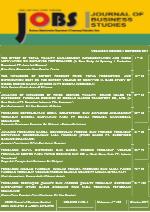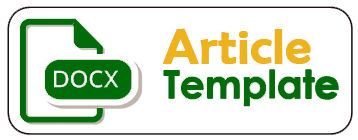The influence of Organizational Communication, Work Motivation, and Self-Efficacy on Employee Performance in PT Angkasa Pura Logistik Semarang
DOI:
https://doi.org/10.32497/jobs.v6i1.2529Keywords:
Organizational Communication, Work Motivation, Self-Efficacy, Employee PerformanceAbstract
The aspect of human resources or employees is an important factor that must be considered in the company. Human resources are the main assets for the company as active actors in various activities in the organization. Many companies provide logistic services such as warehousing, transportation services, freight services, etc. One company that used the service of logistic provider is PT Angkasa Pura Logistik Semarang. Due to the large number of logistic companies, PT Angkasa Pura Logistik Semarang needs to improve its employees' performance to compete in the logistics industry. Therefore, they must pay more attention to organizational communication, work motivation, and self-efficacy of their employees. The purpose of this research is to analyze the influence of organizational communication, work motivation, and self-efficacy on employee performance in PT Angkasa Pura Logistik Semarang. The research model was used multiple linear regression and SPSS 25. The sampling method used was simple random sampling. The questionnaire was distributed to 50 samples of staff in PT Angkasa Pura Logistik Semarang. The results showed that organizational communication had a positive and significantly influenced employee performance with a significant value of 0.011 < 0.025 and the t value of 2.640 > t table 2.01290. The variable of work motivation had a positive and significant influence on employee performance with a significant value of 0.013 < 0.025 and the t value of 2.583 > t table 2.01290. The self-efficacy variable had a positive and significant influence on employee performance with a significant value of 0.023 < 0.025 and the t value of 2.360 > t table 2.01290Downloads
Published
Issue
Section
License
Authors who publish with this journal agree to the following terms:
Authors retain copyright and grant the journal right of first publication with the work simultaneously licensed under a Creative Commons Attribution License that allows others to share the work with an acknowledgement of the work's authorship and initial publication in this journal.
Authors are able to enter into separate, additional contractual arrangements for the non-exclusive distribution of the journal's published version of the work (e.g., post it to an institutional repository or publish it in a book), with an acknowledgement of its initial publication in this journal.
Authors are permitted and encouraged to post their work online (e.g., in institutional repositories or on their website) prior to and during the submission process, as it can lead to productive exchanges, as well as earlier and greater citation of published work (See The Effect of Open Access).






